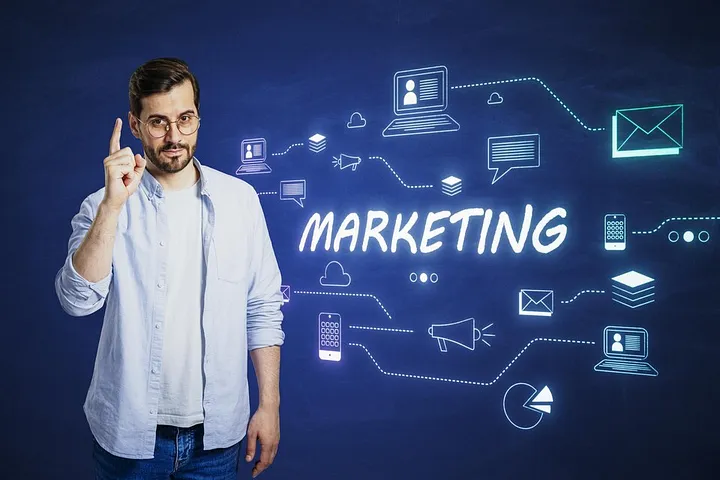
The field of marketing is very dynamic, and industries and consumers are adapting to emerging trends in technology, including the latest innovations. Later, the rules did not exempt paid media marketing from them either. Therefore, as we fast forward to the year 2025, those marketers will have to make a change, a change that will help them compete against other marketers in that overstuffed marketplace.
In this article, I’m going to walk you through 8 big shifts that marketers have the best shot at paid media marketing in 2025. By clearly understanding and enacting these changes, marketing professionals will be best positioned to meet the challenges of the future and craft effective, data-driven marketing campaigns.
1. Omnichannel advertising should be something everyone embraces.
Digital disruption has formed the current customers, and their experience is integrated across all touchpoints, whether online or physical. Hence, the a need for a ubiquitous advertising strategy for marketers who bundle their economic media and contacts.
By 2025, paid search marketing will have well-established relationships with social media, display, and other forms of digital marketing. With that, they can deliver relevant and timely messages to the consumer and hence can improve the reach and conversions.
For this purpose, marketers need to use data and analytics to discover consumer patterns and establish how a customer gets converted to a purchase. This will aid them in defining consumer behavior as well as their preferences so they can come up with the right campaign strategies to use in churning high returns on investment in a consistent manner.
2. PrioritizePersonalizationn
Thus, the world is steadily becoming a canvas for the digital world, whilst customers are swamped with information, and it becomes ever more daunting to gamble on their time. This is where the need for Personalization comes in — since it’s vital to every marketing strategy that a company uses to create a unique identity and provide unique customer experiences.
Lastly, our analysis shows that by 2025, Personalization will be a success factor in paid media marketing at an advanced level. Consumer flows should be based on data like geography, age, preferred websites, and previous buying behaviors so you can then serve pertinent advertisements to the relevant consumer.
Enhanced targeting opportunities facilitated by platforms such as Google and Facebook help to achieve this, as well as the help of machine learning systems that also define further details about customer preferences and bebehavioradjusting ad material depending on them.
3. Focus on Video Content
Video content has been embraced by people, particularly on YouTube and TikTok, which are the primary sources of video consumption on the internet. There will be an increased trend in the future, and therefore, marketers in their paid media marketing should use video in their marketing strategy.
Marketers who anticipate to keep going in 2025 should guarantee that they produce quality videos that will capture consumers’ attention and motivate them to act distinctly. Insight-driven brand videos, product videos, user videos, and other things could be that.
Moreover, marketers need to figure out the native video advertisement opportunities that exist and target a large audience. For instance, YouTube includes its in-stream ads in Google, while Facebook includes in-stream ads and its story ads. With the above-mentioned options, the marketer can make use of these to achieve his or her targeted objectives as made to create videos.
4. Invest in Voice Search
Voice assistants and smart speakers are now changing the way the general public looks for information or even buys things. We assume voice search growth by 2025, and marketers should make paid media voice search strategy updates.
To advertise via voice search, marketers have to search for commonly used voice search queries related to their sphere of business or services they sell and include these queries in the paid media they design. On the other hand, they should also use voice to make their website user-friendly by fitting the natural language of voice search, along with the long tail phrases.
Besides that, marketers should consider exploring new voice marketing forms such as Google Home, a voice digital assistant, or Amazon’s Alexa.
5. Artificial Intelligence and Machine Learning are used.
No, AI and machine learning technologies are finding their place in the marketing sector, and this will increase in the future. In the next four years, the marketer’s paid media strategy should embrace AI and machine learning to improve their ability to make decisions.
However, for marketers, AI is actually a great thing as it can actually automate processes such as ad making and placing, choosing the target audience, or bidding, all of which require a lot of time and resources, which, in the end, do give better results. They can also estimate the consumers’ behavior and taste and guide marketers in revising the content and focus of advertisements using the same algorithms.
Furthermore, marketers should see new advanced AI techniques of NLP and computer vision to develop more imaginative compensated media undertakings that mean something to the clients.
6. Programmatic Advertising needs to get more focus.
When it comes to paid media marketing, programmatic has been widely adopted because it allows advertisers to purchase and sell ad space on an instantaneous basis. Marketers who want to optimize their reach, efficiency, and ROI of marketing in 2025 should look at programmatic advertising.
For programmatic advertising to be effective, marketers need to focus on building a great data management platform that collects and congregates user data from across the Web. They can thus build accurate and specific consumer images and use sophisticated targets to target the appropriate client base.
Additionally, marketers can find potential to expand the programmatic ad format to include in-stream video, native ads, and mobile ads to reach users who are at other points along their journey.
7. From it, we see that focusing more on account-based Marketing (ABM) is important.
By its very nature, account-based marketing (ABM) offers a preferred approach in marketing, that is, tailored to the account, should that goal be to market a specific account rather than everyone in one fell swoop. Hopefully, by 2025, industries will maximize their ABM approach for interaction with their first-class client.
To execute ABM in the most efficient manner, marketers should divide their target accounts based on factors such as revenue possibility, interactions, and geographic zones. From there, they will be able to create targeted cross-channel marketing communications in harmony with the account’s needs and wants.
In addition, marketers need to learn about all the other aspects of ABM that the market has to offer, such as predictive analytics and artificial intelligence.
8. First Comes Brand Safety & Transparency
If the two — the customers and the consumers have started reading their consumption impact and reading that they are interdependent, then the brands have to do it and mustn’t insert false or misleading content. By 2025, brand safety and brand transparency have to be the two main focus areas for marketing when communicating on paid media.
So, to prevent this, marketers should use other related,d relevant, and reputable partners and platforms that have high advertising content moderation standards. They should also be checking their campaigns regularly for something that is not appropriate or not related to the campaign and must do something about it instantly.
From the perspective of transparency, a marketer should announce all their advertising and sort out any information they have with the assistance of a third party as well. They should also focus on privacy and protecting the consumer’s data because the management of these data needs to be compliant with existing laws and policies.
Conclusion
This is particularly the case because of the paid media marketing environment, which is dynamic in nature. Hence, marketers constantly update networking to satisfy their network marketers. New trends and changes that will shape paid media marketing in 2025 are as follows: Omnichannel, Personalization, video, search via virtual voice, artificial intelligence, machine learning, programmatic, ABM, brand safety, and transparency.
In order to achieve the needs and expectations of the target market and also to bring higher ROI back to the business through the purposeful, innovative, and effective creation of the proper influential campaigns with the use of the guidelines and data-based signs. The future of paid media marketing is looking promising; as new technologies and new platforms emerge, the entities that are willing to adjust to these emerging trends have the upper hand.




